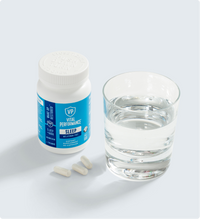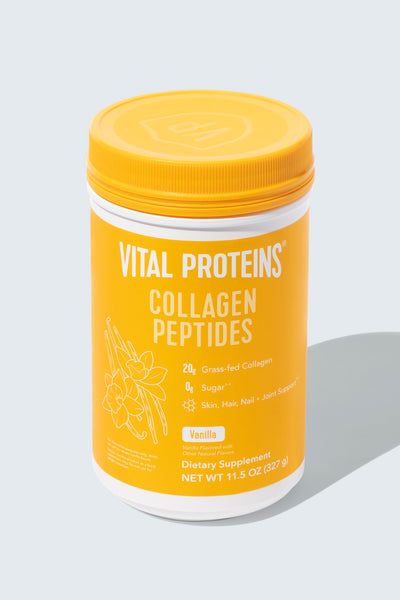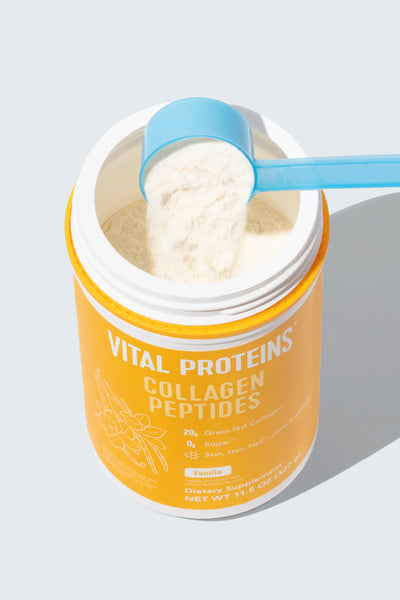Have you thought about starting a vegetable garden, but not sure where to begin? While it does take some effort to plan and prepare, the good news is that it’s possible to start small and gradually increase the complexity of your growing techniques over time. We’ve rounded up some basic veggie gardening tips below, so take some notes, and who knows maybe it’ll become one of your new favorite and rewarding hobbies.

What do I need to get my veggie garden started?
Starting your veggie garden can be exhilarating, but also overwhelming when it comes to the large scope of garden tools and supplies out there. Allison Vallin Kostovick, organic gardener and founder at Finch + Folly, says her best advice is to start small and slowly build up bed-by-bed over the years. She breaks down some additional handy recommendations here:
Structure: A 4 x 4 ft. or 4 x 8 ft. raised bed are both great ways to start a garden from scratch. Additionally, there’s the low-cost option of fabric grow bags—these come in a large array of sizes, are easy to move around and allow you to grow pretty much any veggie you’d like in them.
Quality Soil: When it comes to good garden soil, look to fill your bed/container with a mixture of 60 percent compost and 40 percent topsoil. If you have a large bed to fill, you can place some twigs, branches and leaves as a bottom layer across the bed prior to topping with soil (this will create future compost as the twigs and leaves slowly decompose and feed nutrients back to the soil).
Watering Source: A garden hose and watering can are all that you’ll need to get growing—just be sure that your water source can easily reach your garden. Also, look for a sprinkler nozzle for your hose that allows for different levels of water flow, so you can have control over the spray.
Lively tip: when watering your veggies, always try to avoid getting their leaves wet, instead, focus on watering at the base of the plant which helps deter the spread of disease and fungus.
Garden Scissors: Keep a nice pair of garden shears nearby to help you harvest, deadhead (remove spent flowers from plants) and trim back on the spot.
Hand Tools: In terms of hand tools, a hand-held hoe and pronged cultivator are great to have in your gardening arsenal.
Related Articles
What veggies should I choose?
So, how do I know which veggies to plant? Vallin Kostovic tells Lively to simply start by growing some vegetables that you love. A few of her favorites for new growers to plant include: beans, lettuce, peas, carrots, radish, herbs, bush tomato, summer squash, zucchini, beets, hot peppers and strawberries.
“When just starting out, visit your local nursery for established seedlings that you can plant straight into your garden,” she notes. “If you’d like to try your hand at starting via seeds, beans, radishes, carrots and squash are wonderful ones to begin with that can be directly sown into your garden bed.”
One other important thing to keep in mind is that veggies are seasonal, so some crops prefer cooler weather, like peas, spinach and lettuce, while others flourish in warm weather, including tomatoes, peppers, squash and basil.
Related Articles
What is the right location to grow the veggies?
Vallin Kostovic points out that many vegetables prefer to be grown in a location that receives at least six to eight hours of direct full sunlight, preferably afternoon sun as those rays are stronger than the morning rays. “This is especially true when it comes to fruiting vegetables like tomatoes, peppers, squash and cucumbers, as well as root veggies like onions and carrots,” she explains. “Leafy veggies such as lettuce, spinach and kale can all tolerate partial shade and prefer morning rays as they can wilt under strong afternoon sun.”
She recommends placing tall or trellised plants at the northern end of your garden so they do not cast a shadow over neighboring plants.
Anything beginner vegetable gardeners should avoid?
Sarah Symonds of Grace In My Space shares that beginner gardeners are often overzealous when it comes to planting. “If you are brand new to gardening, start with two or three vegetables either in patio containers or raised beds. This way you can get a feel for how much time it takes to weed and care for these plants,” she says, adding that you can then adjust accordingly how much to plant the following year.
Try to avoid anything chemical if possible, adds Vallin Kostovic, sharing that pesticides and weed killers not only get rid of your garden pests and weeds, but also kill all your “beautiful bees and other beneficial insects which are key to a successful harvest as they pollinate your plants.” She alternatively suggests using organic solutions to achieve better results that are “much kinder to the garden you’re trying to grow.”

Any final words of wisdom?
Finally, we leave you with some last tidbits of advice from our seasoned gardeners. For one, Vallin Kostovic suggests growing lots and lots of herbs. “Herbs are a gardener’s best friend for many reasons, but they are especially kind to beginner gardeners as they are fairly hassle free to grow, plus they’ll provide endless uses both in and out of the kitchen,” she says.
Symonds adds that her first years of gardening were discouraging because she overplanted and couldn’t keep up. “Like most beginner gardeners, I didn’t know what I was doing — start small and don’t give up after one difficult growing season, instead learn and adjust for the next year,” she tells Lively.
And to wrap up, have fun and take the time to enjoy what you’ve created! “Gardening is a wonderful activity for the mind, body and soul—it’s a beautiful journey to take,” notes Vallin Kostovic.

















